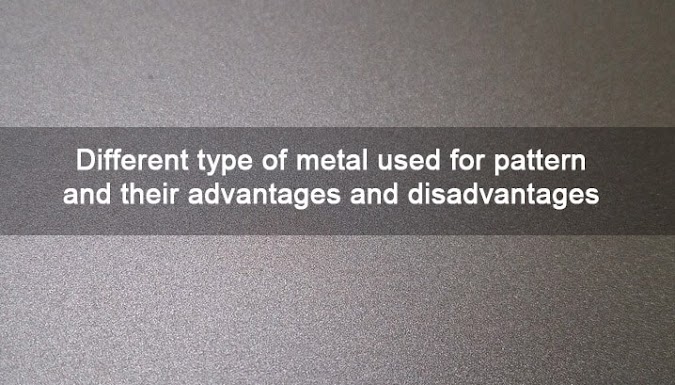Different Type of Metal Used For Pattern And Their Advantages And Disadvantages
Read: Types of Pattern Material - Application, Adavanatages And Limitation
Due to durability and smooth surface finish, the metal patterns are more popular in the casting process. There various type of metal used for the pattern. Even though hard metal such as cast iron brass, etc can be used to pattern making, the white metal and aluminium are the most commonly used. This is because they are light, corrosion resistant and can easily work on them. Moreover, the white metal have very small shrinkage, so they can be made without giving double shrinkage allowance.
The following table give the comparative characteristics
Advantages and disadvantages of different metallic pattern materials
Pattern
metal
|
Advantages
|
Disadvantages
|
Cast iron
|
High strength
Low cost
Better machinability
|
High weight or
density
Poor resistant corrosion
Brittleness
|
Steel
|
Smooth surface finish
High strength
|
They are prone to corrosion
High density
|
Brass
|
Good surface finish
Corrosion and wear resistant
Strong ad tough
High machinability.
|
High density as compared to weight metals
Expensive
|
Bronze
|
Good surface finish
Corrosion resistant
High strength
|
High density
High cost
|
Aluminium alloys
|
They are soft, low density
Corrosion resistant
Good surface finish
Easy to shape
|
Low Strength
Cost is high
Not suitable for rough usage.
Easily damaged by sharp edge.
Good care needed
to storing and transportation.
|
Lead alloys
|
Good
machinability
Low melting point.
|
High cost
Low strength event though it have high density
|
- In the mercast process the mercury used for pattern making


